Who are our common pollinators and what do they do?
Views: 2069
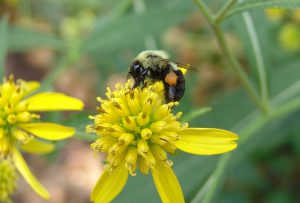
In my last blog, I mentioned the importance of pollinators, and I provided several pollinator-related resources, including four native plants that are beneficial to them. In this blog, I thought I’d introduce you to our most common groups of pollinators, plus explain what pollination actually is and how it works.
Pollination
Pollination is the transfer of genetic reproductive material (pollen) from the male anther of a plant to the female stigma. The fine grains of pollen contain male microgametophytes, and when these come in contact with a compatible female pistil, successful fertilization may occur. Fertilization may lead to the creation of seeds and fruits, and these may germinate. Most gardeners understand that when seeds germinate, they begin to sprout. That’s a rather broad-stroke overview of the process, but it is an important way in which many plants reproduce.
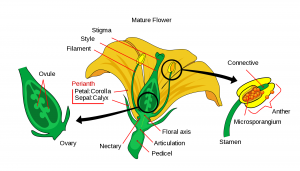
Parts of a flower including the stigma and the anther.
Methods of Pollination
Some plants are pollinated by wind; others can self pollinate; but many rely on animals to be go-betweens. The latter are our pollinators, and plants have developed a variety of strategies to attract them. Essentially, plants offer pollinators a reward for visiting. These rewards include nectar (high in carbohydrates), pollen (high in protein and other nutrients), and useful resins and oils. While the visitor is feeding on nectar or wallowing about the flower collecting pollen, they become coated in tiny grains of pollen which they then carry to the next flower they visit.
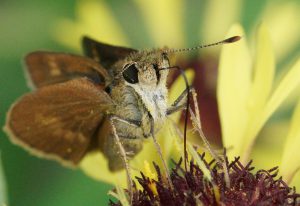
You can clearly see the yellow grains of pollen collecting on this butterfly.
The type of pollinator visiting a particular flower may be determined by the reward offered. For example, nectar plants may be more helpful to hummingbirds, while flowers that produce easily-accessed pollen might be more helpful to bees. Plants also use different methods to get pollinators’ attention, such as different colors and bloom times. For example, four-o’clocks often attract hummingbird moths that are out at dusk, and my Queen of the Night, with its huge, white flowers and delightful perfume aims to appeal to bats and big moths. Flower shape also plays a role by making it easier or more difficult for various pollinators to access their rewards.
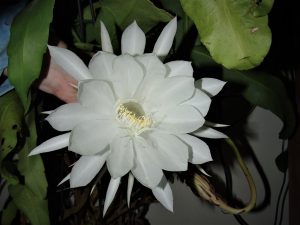
Epiphyllum oxypetalum blooms at night and, in the wild, is pollinated by bats and large moths.
Who are our Pollinators?
Pollinators can be insects such as bees, beetles, butterflies and moths, flies, wasps, and, rarely, ants. But some animals act as pollinators, too, and these include bats, hummingbirds, and some small mammals like rodents.
Here are a few interesting tidbits about our most common insect pollinators:
- Bees: There are around 4,000 bee species in North America, so I won’t cover them all here. But common visitors to the garden include honey bees, bumble bees, and sweat bees. Most bees will collect both pollen and nectar; a few will collect resins and oils. Interestingly, bees see well into the ultraviolet spectrum, and humans are unable to see the ultraviolet colors that flowers often employ to attract them.
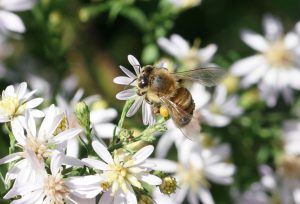
This bee has a pollen basket (the yellow/orange clump) on its hind leg.
- Beetles: Beetles and flowers have an ancient relationship, and they remain important for certain species like spicebush and magnolias. Common beetles include soldier beetles, leaf beetles, long-horned beetles, and blister beetles. Beetles feed on both nectar and pollen.
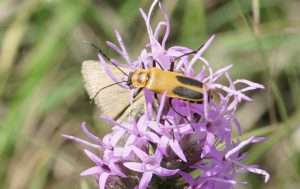
This Soldier beetle, a Pennsylvania Leatherwing, is a valuable pollinator.
- Butterflies and moths: Butterflies and moths feed on nectar, and they use a long proboscis to suck it up. In the process of feeding, pollen from the plant’s anthers will stick on the wings or proboscis of the butterfly or moth, which gets transferred to other plants when the butterfly or moth moves around.
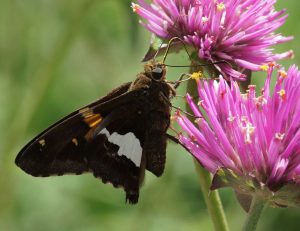
This Silver-Spotted Skipper has a long proboscis covered in pollen.
- Flies: While not the most popular garden visitors, syrphid flies, bee flies, tachnid flies, and others are important pollinators for many flowers. Some flowers such as red trillium use a foul smell to attract flies. Others, such as pawpaw, use a combination of meat-colored petals and decaying stench.
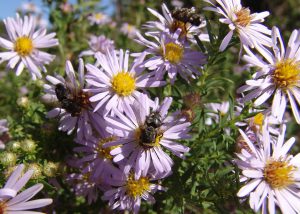
Certain flies are important pollinators, including these Tachnid flies.
- Wasps: Wasps are primarily attracted to nectar, and, typically, they aren’t aggressive when visiting flowers. Because they aren’t covered in as many tiny hairs as bees, they aren’t nearly as effective at pollinating. Even so, wasps are considered an important pollinator.
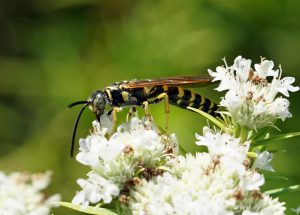
A Five-Banded Tiphiid Wasp dusted with pollen.
To help our pollinators, gardeners should provide plants that offer different rewards and attraction strategies. Provide a variety of colors, bloom times, flower shapes, and both nectar and pollen sources. I tend to look for hummingbird, bee, and butterfly friendly-plants. Between those three, I know I’ll be helping a wide range of pollinators.
Meet Leslie Miller
Leslie Ann Miller shares 3.5 acres in rural Oklahoma with birds, butterflies and wide variety of animals. She is currently transforming her yard with plantings…
Leslie's Recent Posts
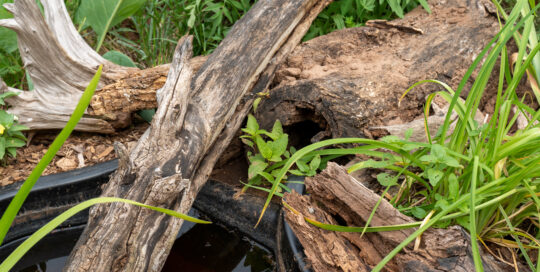
Creating microclimates and microhabitats to benefit wildlife






